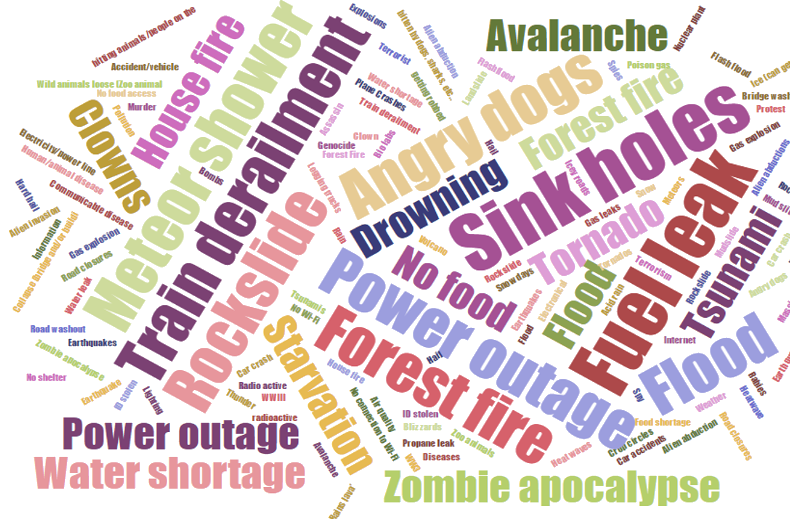
Hazard identification by Lil’wat youth
Starting in 2014, the program was developed in three phases:
Phase 1: Connecting academic research, scientific knowledge with community knowledge:
- A number of resources and training courses on the relevant aspects of disaster risk reduction were identified in Canada and internationally (e.g. JIBC and Wilfrid Laurier University Aboriginal Disaster Resilience planning tools; UNESCO “Local and indigenous knowledge for community resilience”; online courses listed on the U.S. National Library of Medicine (ranging from preparedness training for tribal leaders to building preparedness systems for pandemic influenza in vulnerable populations in tribal communities).
Phase 2: Interviewing practitioners, Indigenous community leaders and youth:
- Various programs were reviewed and some direct contacts were established with community leaders and organizations nationally and internationally that serve and work closely with Indigenous/Native youth. These included the Beaver Lake Cree Nation (housed and served Fort MacMurray evacuees); Dancing Deer Disaster Recovery Centre( lessons on response and recovery following the devastating 2013 floods); Lummi Youth Academy (US); the University of New Mexico Gallup which works closely on emergency management with Navajo youth and FEMA. Key learnings from the Youth Beyond Disasters initiative and the lessons learned on youth mobilization following devastating earthquakes in Christchurch, New Zealand. Materials from the Center for Disaster and Risk Analysis (CDRA), the leading US Center for research on the role of children and youth in disaster risk reduction and emergency management were also incorporated.
Phase 3: Program implementation: The knowledge generated through these organizations and this growing network was applied, augmented and contextualized in Indigenous communities.
Learn their stories:
Ahousaht: Oil spill response training.
Lil’wat: “Preparing our Home” program wins a global competition for engaging youth in disaster risk reduction
Ucluelet: Technology Meets Tradition
Curve Lake: Interview with Eric Taylor, Youth Councillor.
Peer to peer learning and community level knowledge transfer:
- Peer to peer (among youth) and youth to community members/elders learning in communities: recognizing that training must be a two-way street and that as equal partners, all parties can learn from each other.
- Recognizing that training and education must be inclusive, respect Traditional Knowledge, and begin early—before disaster strikes. The project combined learning from communities that recently experienced a natural hazard event (e.g. learning about community healing and recovery from Dancing Deer Disaster Recovery Centre, Siksika Nation) but also works with communities that have not experienced a recent event. Learning between communities will be facilitated through the developed online platform and peer to peer exchange.
- Youth will develop/share information to gain the buy-in of chiefs, elders, etc. for engaging in disaster risk reduction.
